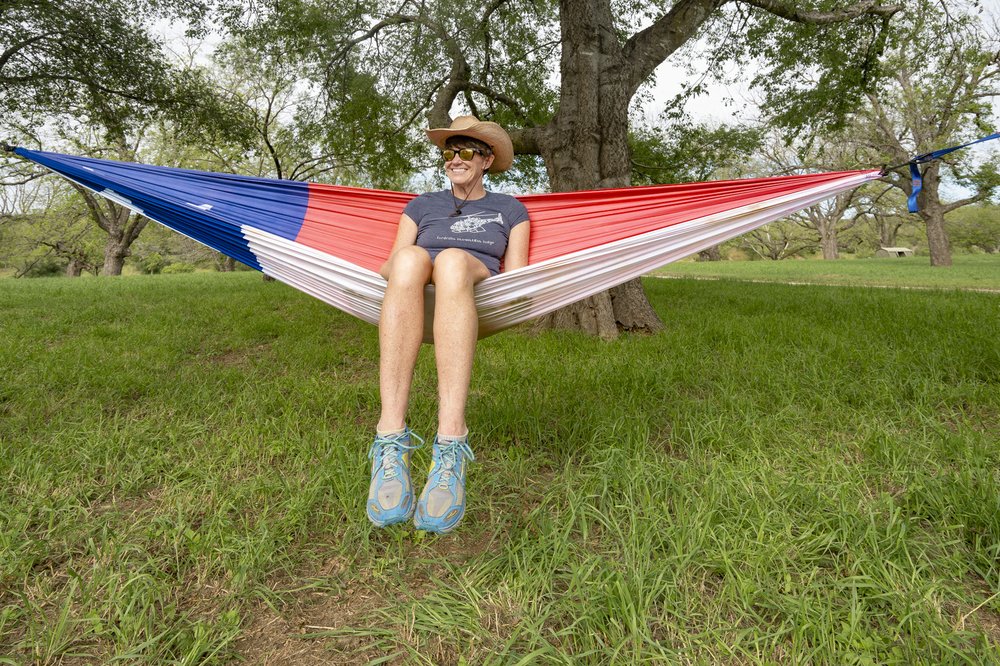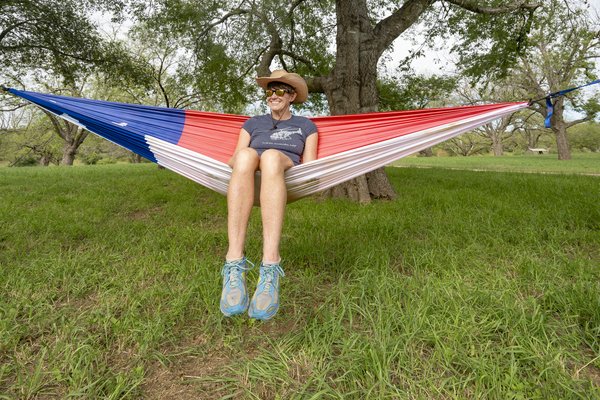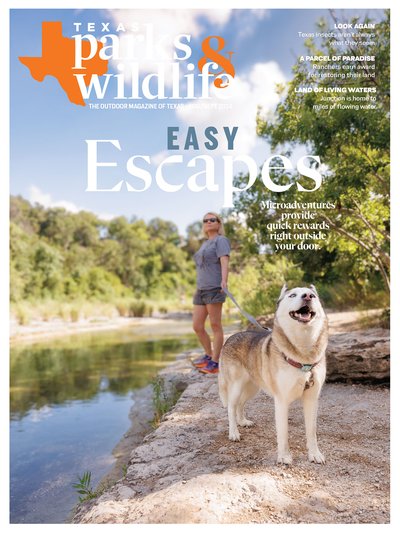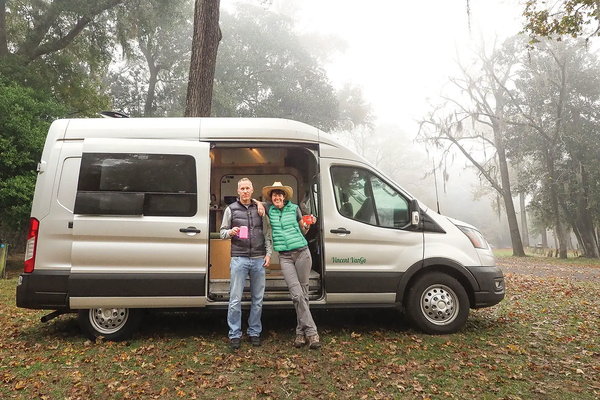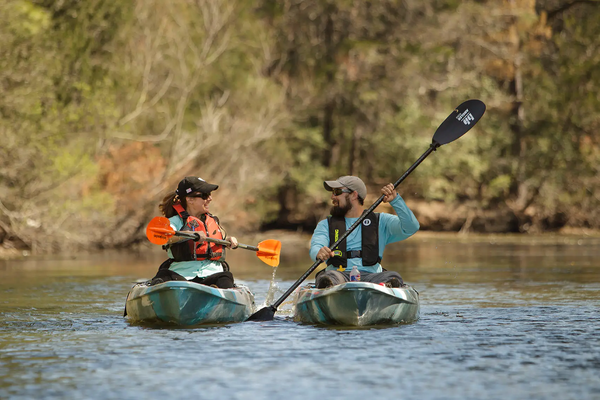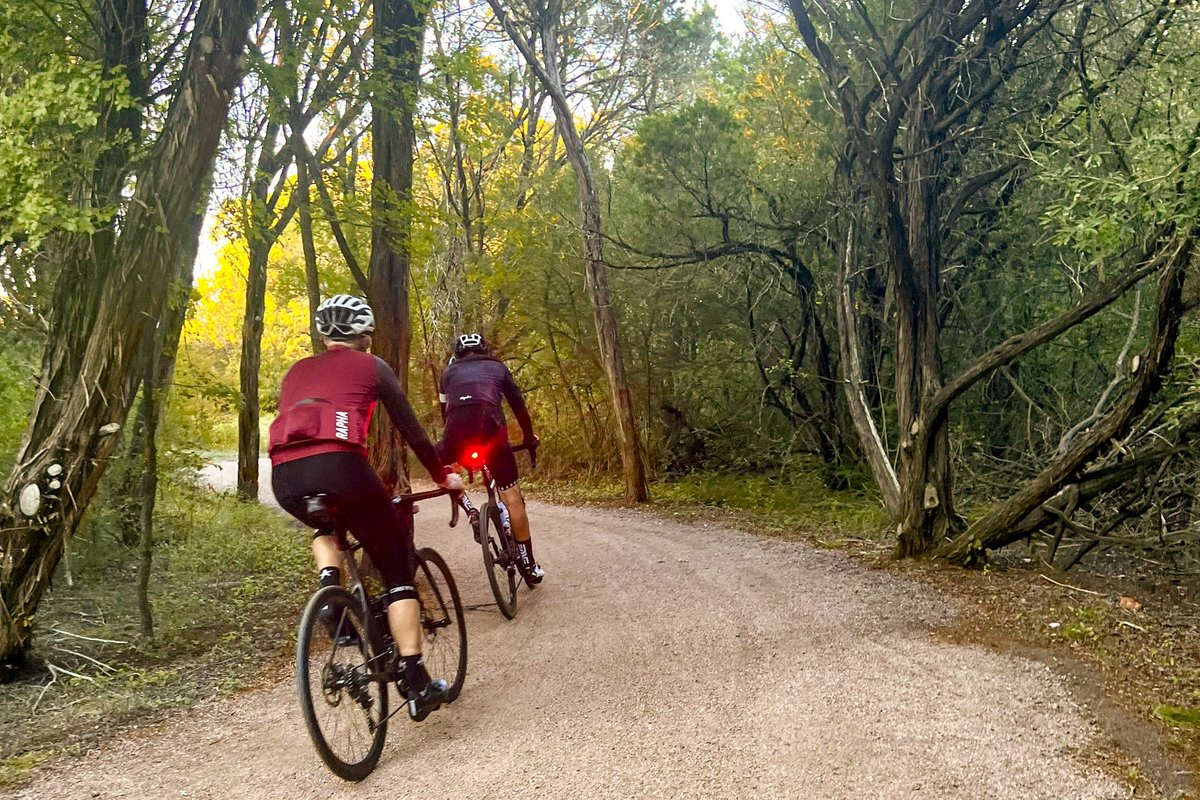From the hammock where I've been snoozing, suspended in a cozy burrito a few feet above the ground, I don't worry about spine-poking rocks or landlubbing critters like centipedes or scorpions that could lurk beneath me.
I just sway gently back and forth like I'm riding a ship through calm seas. Above me, leaves shift and flutter. A breeze ruffles my hair.
Here's the deal. In Texas, where summer camping can mean sweaty nights inside a stifling tent, hammocks offer a bit of a respite. Air circulates around you, tempering the inevitable summer inferno.
I first tried hammock camping in West Texas in 2017. A group of us planned to hang out in Big Bend National Park but discovered visitors aren't allowed to hang hammocks from trees because they can cause damage. (You're allowed to use hammocks on hammock stands.) We detoured to private land in the nearby Davis Mountains, where we slung our colorful hammocks from sturdy trees that don't see as much traffic.
It was winter, and temperatures dipped below freezing. But the tarps, sleeping pads and under-quilts we used with our hammocks kept us, well, not exactly warm, but pretty comfortable considering the conditions.
I learned a lot about the advantages of hammock camping during that trip. I expected to either flip out onto the ground in the wee hours of the night or wake up crimped into a human-sized paper clip, but neither of those things happened. Someone showed me how even a side sleeper like me can lie diagonally across the hammock and spread the fabric out to create a flatter sleeping surface. I also discovered you can buy inflatable camping pads designed for use inside hammocks to add more structure.
Another advantage? You don't need a perfectly flat spot to set up camp. Attach a hammock to almost any two points — most folks use trees, but you can also hang one from boulders, vehicles or a purpose-built stand — and even if the ground beneath you slopes, you'll have a level spot to sleep.
“It's just different,” says Chris Eddy, head of product and sourcing for Kammok, an Austin-based manufacturer of high-end camping gear including hammocks, trail quilts and camper awnings. “You're floating off the ground and it's a little better view, and you get a little swing and sway.”
You can buy a hammock suitable for camping for less than $100 — or spend a little more for an all-in-one hammock tent that comes with a built-in tarp and mosquito net. Besides Kammok, companies like the North Face, Eno and Grand Trunk offer all kinds of options, including specially designed accessories to make your experience even more comfortable.
Just check with the park you plan to visit before hanging your hammock. Some, like Big Bend National Park, don't allow visitors to attach hammocks to natural features, because they can cause damage with repeated use. Most Texas state parks do allow hammocks, as long as you're hanging them from trees that are at least 8 inches in diameter where you attach the straps (ask a ranger about site-specific rules). Stay within the boundaries of your assigned campsite, too.
When you do find a spot, kick back, close your eyes and enjoy a night that'll leave you feeling like you're sleeping on clouds.
